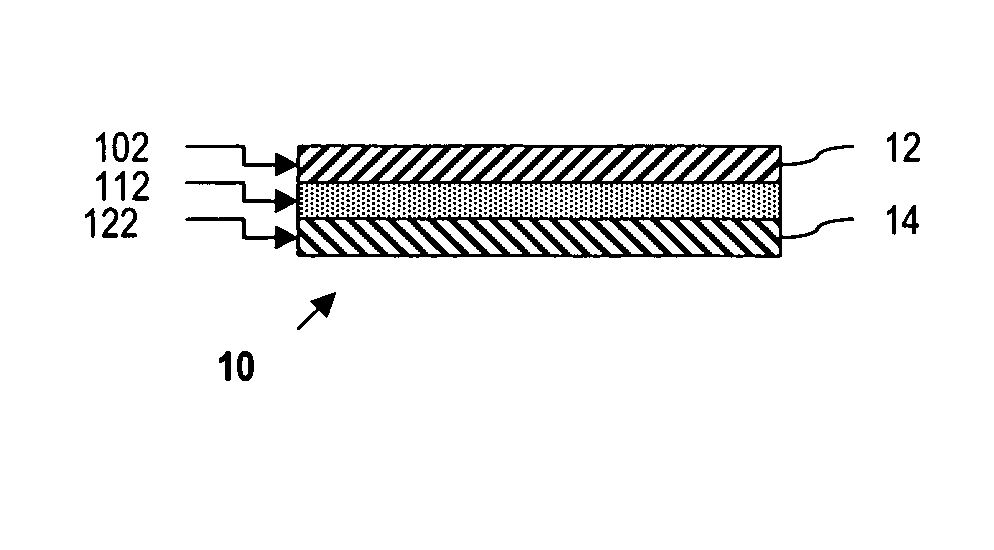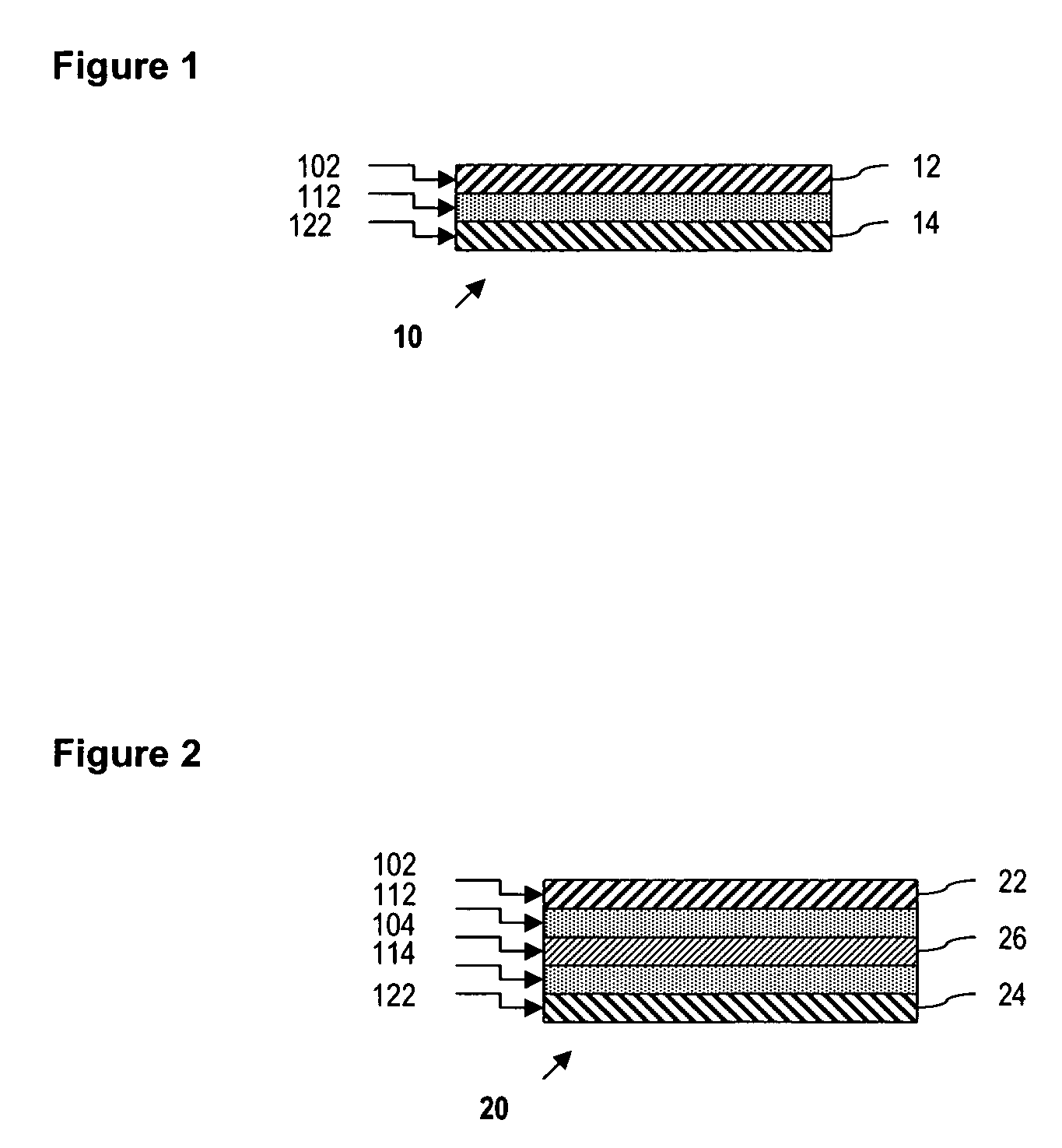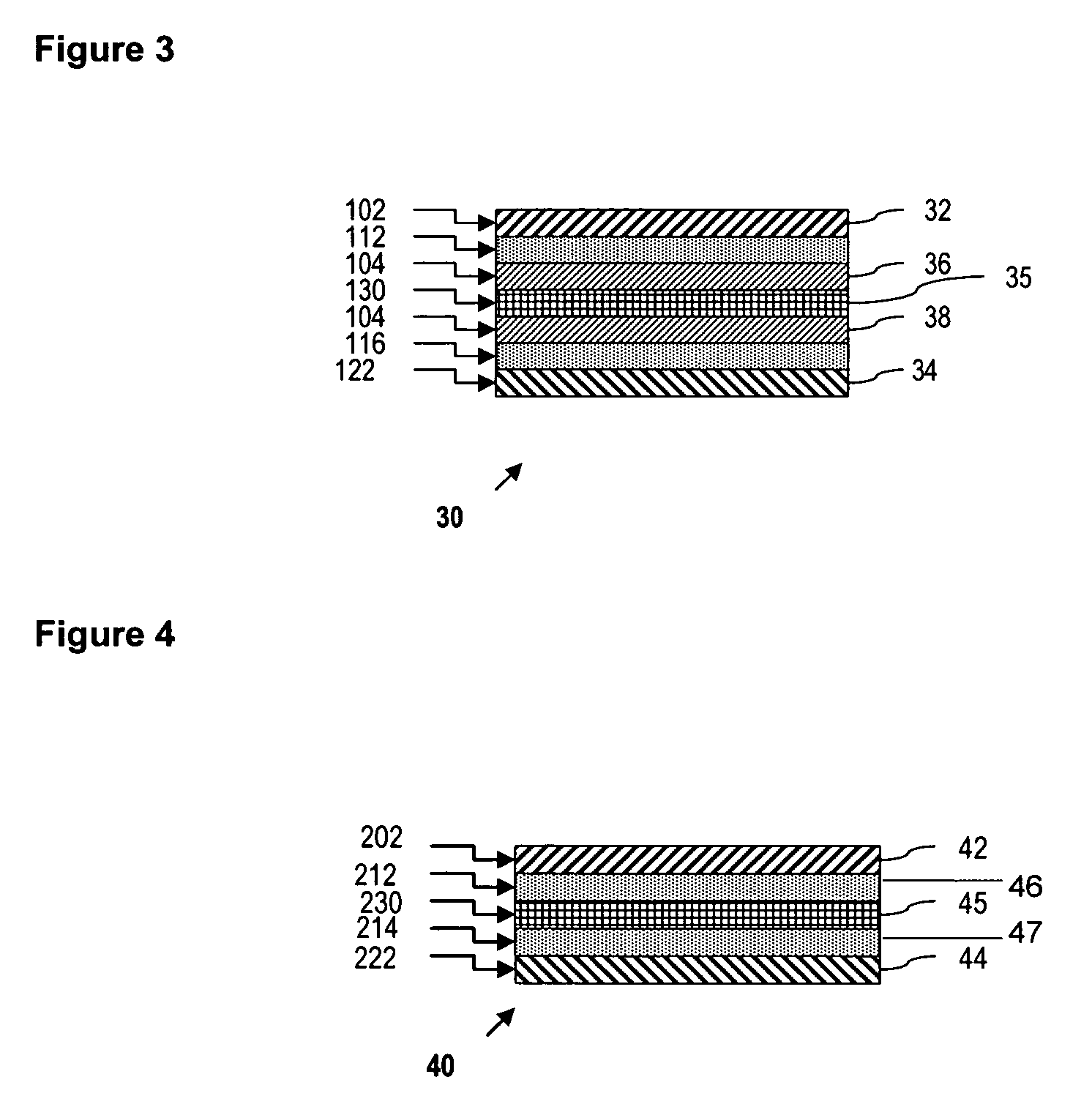Myoglobin blooming agent, films, packages and methods for packaging
a technology of myoglobin and blooming agent, which is applied in the field of myoglobin blooming agent, films, packages and methods for packaging, can solve the problems of undesirable packaging format, insufficient preservation of favorable meat color, and insufficient shelf life of bright red color, etc., to promote or promote favorable red color on the meat surface, and promote or promote desirable coloration
- Summary
- Abstract
- Description
- Claims
- Application Information
AI Technical Summary
Benefits of technology
Problems solved by technology
Method used
Image
Examples
example 1
[0237]A 40% by weight solids sodium nitrite solution may be prepared by dissolving 8 kg of NaNO2 (commercially available from Rapauno Products and distributed by Hydrite Chemical Company, Brookfield, Wis.) in 12 kg of water. The solution is made with tap water at room temperature by gently agitating the water / nitrite mixture.
[0238]A polyethylene such as Dow ATTANE® 4201-G VLDPE (commercially available from Dow Chemical Company, Midland, Mich.) is loaded into the hopper of a gravimetric dosing unit that is positioned to feed the polymer into the main feed port of a twin screw extruder. The feeder is configured to dose the polyethylene at a rate of about 40 kg / h. The mixing elements of the twin screw extruder are arranged in a fashion that allow for feeding and melting of the VLDPE, injection and mixing of the water / nitrite solution, removal of the water, pressurization of a die and formation of continuous strands of a homogeneous and uniform polyethylene / nitrite blend.
[0239]The twin ...
example 2
[0242]The process of example 1 is followed, except that a polyethylene such as Dow 608A LDPE (commercially available from Dow Chemical Company, Midland, Mich.) resin is used in place of the Dow ATTANE VLDPE resin.
example 3
[0243]The process of example 1 is followed, except that a polymer such as Voridian SC 74556-F LLDPE resin is used in place of the Dow ATTANE VLDPE resin.
PUM
| Property | Measurement | Unit |
|---|---|---|
| heat shrinkage | aaaaa | aaaaa |
| thickness | aaaaa | aaaaa |
| thickness | aaaaa | aaaaa |
Abstract
Description
Claims
Application Information
 Login to View More
Login to View More - R&D
- Intellectual Property
- Life Sciences
- Materials
- Tech Scout
- Unparalleled Data Quality
- Higher Quality Content
- 60% Fewer Hallucinations
Browse by: Latest US Patents, China's latest patents, Technical Efficacy Thesaurus, Application Domain, Technology Topic, Popular Technical Reports.
© 2025 PatSnap. All rights reserved.Legal|Privacy policy|Modern Slavery Act Transparency Statement|Sitemap|About US| Contact US: help@patsnap.com



